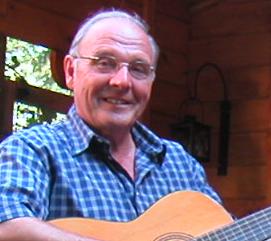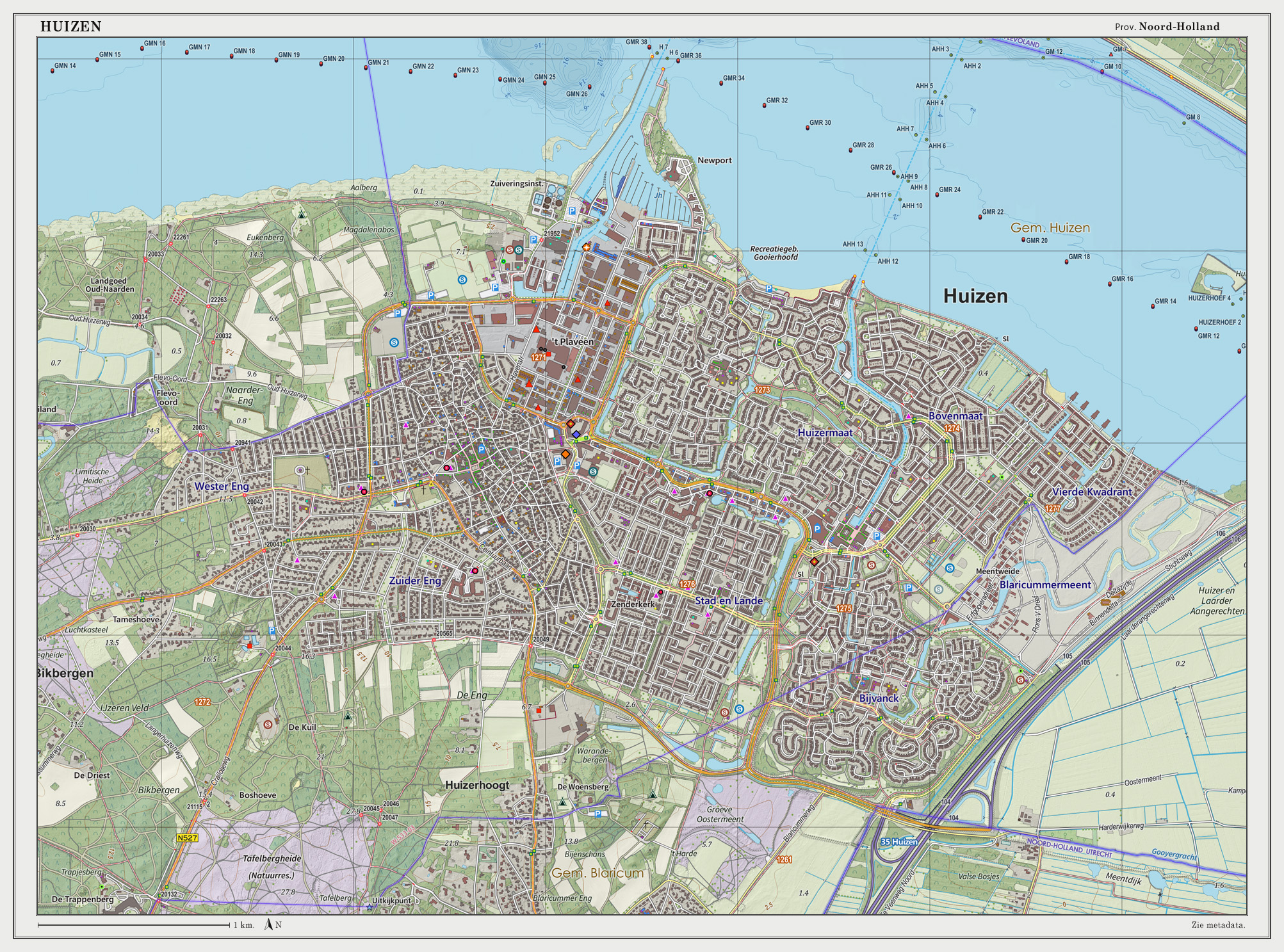|
West-Veluws Dialect
West-Veluws is a Low Saxon dialect of the Dutch province of Gelderland. It is spoken in several Veluwe municipalities and villages including: Nunspeet, Putten, Ermelo (''Armelo''), Harderwijk (''Harderwiek''), Uddel, Nijkerk (''Niekark''), Appel, Scherpenzeel (''Schaarpezeel''), the municipality of Barneveld (''Barreveld'') and some villages of the municipality of Ede. West-Veluws is also spoken in the Utrecht village of Bunschoten (''Bunsjoten'') and originally in Leusden and Amersfoort as well, but here the dialect has almost died out. The border between West-Veluwe in the northeast and Utrecht and South Gelderland in the southwest is very frayed: even the dialects of, for instance, Soest, Eemnes, Huizen and Laren still have Lowlands Saxon characteristics. In the articles Goois, Eemlands and Geldersevalleis these transitional dialects are discussed in more detail. Speakers West-Veluws is mainly spoken by older people, the Low Saxon dialect is not very popular among the y ... [...More Info...] [...Related Items...] OR: [Wikipedia] [Google] [Baidu] |
Veluws
Veluws is a Westphalian dialect which is spoken on the Veluwe, in the northwest of Gelderland, in central Netherlands. The language was recognized by the government of the Netherlands in 1996 (as part of Low Saxon). Dialects Veluws is usually divided into two main dialects, West-Veluws and Oost-Veluws (East Veluws), these two dialects are reasonably similar but differ in grammar. For example: in Oost-Veluws it is said ('you are working') and in West-Veluws ('you are working'). West-Veluws has more influenced from Dutch. Typically the closer one gets to the border with Oost-Veluws, the more the dialects differ from Standard Dutch. For example, in the central part where West-Veluws is spoken ('he is standing'); in the northwestern part the corresponding phrase sounds , compared to in Oost-Veluws. The latter has more Low Saxon influence. In Hattem, the northeastern part where Oost-Veluws is spoken, it has more Sallandic influences. See also * West-Veluws dialect * Oo ... [...More Info...] [...Related Items...] OR: [Wikipedia] [Google] [Baidu] |
Utrecht
Utrecht ( , , ) is the fourth-largest city and a municipality of the Netherlands, capital and most populous city of the province of Utrecht. It is located in the eastern corner of the Randstad conurbation, in the very centre of mainland Netherlands, about 35 km south east of the capital Amsterdam and 45 km north east of Rotterdam. It has a population of 361,966 as of 1 December 2021. Utrecht's ancient city centre features many buildings and structures, several dating as far back as the High Middle Ages. It has been the religious centre of the Netherlands since the 8th century. It was the most important city in the Netherlands until the Dutch Golden Age, when it was surpassed by Amsterdam as the country's cultural centre and most populous city. Utrecht is home to Utrecht University, the largest university in the Netherlands, as well as several other institutions of higher education. Due to its central position within the country, it is an important hub for both rail and road t ... [...More Info...] [...Related Items...] OR: [Wikipedia] [Google] [Baidu] |
Veluws Dialect
Veluws is a Westphalian dialect which is spoken on the Veluwe, in the northwest of Gelderland, in central Netherlands. The language was recognized by the government of the Netherlands in 1996 (as part of Low Saxon). Dialects Veluws is usually divided into two main dialects, West-Veluws and Oost-Veluws (East Veluws), these two dialects are reasonably similar but differ in grammar. For example: in Oost-Veluws it is said ('you are working') and in West-Veluws ('you are working'). West-Veluws has more influenced from Dutch. Typically the closer one gets to the border with Oost-Veluws, the more the dialects differ from Standard Dutch. For example, in the central part where West-Veluws is spoken ('he is standing'); in the northwestern part the corresponding phrase sounds , compared to in Oost-Veluws. The latter has more Low Saxon influence. In Hattem, the northeastern part where Oost-Veluws is spoken, it has more Sallandic influences. See also * West-Veluws dialect * Oost-Ve ... [...More Info...] [...Related Items...] OR: [Wikipedia] [Google] [Baidu] |
Radboud University Nijmegen
Radboud University (abbreviated as RU, nl, Radboud Universiteit , formerly ''Katholieke Universiteit Nijmegen'') is a public research university located in Nijmegen, the Netherlands. The university bears the name of Saint Radboud, a 9th century Dutch bishop who was known for his intellect and support of the underprivileged. Established in 1923, Radboud University has consistently been included in the top 150 of universities in the world by four major university ranking tables. As of 2020, it ranks 105th in the Shanghai Academic Ranking of World Universities. Internationally, RU is known for its strong research output. In 2020, 391 PhD degrees were awarded, and 8.396 scientific articles were published. To bolster the international exchange of academic knowledge, Radboud University joined the Guild of European Research-Intensive Universities in 2016. Among its alumni Radboud University counts 12 Spinoza Prize laureates and 1 Nobel Prize laureate, Sir Konstantin Novoselov, the d ... [...More Info...] [...Related Items...] OR: [Wikipedia] [Google] [Baidu] |
Standard Dutch
Dutch ( ) is a West Germanic language spoken by about 25 million people as a first language and 5 million as a second language. It is the third most widely spoken Germanic language, after its close relatives German and English. ''Afrikaans'' is a separate but somewhat mutually intelligible daughter languageAfrikaans is a daughter language of Dutch; see , , , , , . Afrikaans was historically called Cape Dutch; see , , , , , . Afrikaans is rooted in 17th-century dialects of Dutch; see , , , . Afrikaans is variously described as a creole, a partially creolised language, or a deviant variety of Dutch; see . spoken, to some degree, by at least 16 million people, mainly in South Africa and Namibia, evolving from the Cape Dutch dialects of Southern Africa. The dialects used in Belgium (including Flemish) and in Suriname, meanwhile, are all guided by the Dutch Language Union. In Europe, most of the population of the Netherlands (where it is the only official language spoken co ... [...More Info...] [...Related Items...] OR: [Wikipedia] [Google] [Baidu] |
Dialect
The term dialect (from Latin , , from the Ancient Greek word , 'discourse', from , 'through' and , 'I speak') can refer to either of two distinctly different types of linguistic phenomena: One usage refers to a variety of a language that is a characteristic of a particular group of the language's speakers. Under this definition, the dialects or varieties of a particular language are closely related and, despite their differences, are most often largely mutually intelligible, especially if close to one another on the dialect continuum. The term is applied most often to regional speech patterns, but a dialect may also be defined by other factors, such as social class or ethnicity. A dialect that is associated with a particular social class can be termed a sociolect, a dialect that is associated with a particular ethnic group can be termed an ethnolect, and a geographical/regional dialect may be termed a regiolectWolfram, Walt and Schilling, Natalie. 2016. ''American Engli ... [...More Info...] [...Related Items...] OR: [Wikipedia] [Google] [Baidu] |
Laren, Gelderland
Laren is a village in the Dutch province of Gelderland. It is located in the municipality of Lochem. Laren was a separate municipality until 1971, when it was merged with Lochem. History It was first mentioned between 1294 and 1295 as Lare, and means pasture in forest. Laren developed into a village in the 19th century along the road from Lochem to Deventer. In 1835, the Dutch Reformed Church was completed. In 1840, it was home to 612 people. Huis Verwolde is a former ''havezate''. It was first mentioned in 1346. In 1510, it was destroyed by the Prince-Bishop of Utrecht, and was torn down. In 1776, it was replaced by the current building. In 1927, a tower was added to the estate. In 1976, it was sold. It has been opened for visitors, and there are holiday homes near the estate. People * Gijs Verdick Gijs Verdick (23 June 1994 – 9 May 2016) was a Dutch professional cyclist. In early 2016 he rode for Cyclingteam Jo Piels. On the night of May 2 and 3, 2016, he suffered t ... [...More Info...] [...Related Items...] OR: [Wikipedia] [Google] [Baidu] |
Huizen
Huizen () is a municipality and a village in the province of North Holland, the Netherlands. The name "Huizen" is Dutch for "houses" and this usage has been linked to the belief that the first stone houses, instead of the more common sod houses at the time, in the region appeared here. Huizen is part of the metropolitan area of Amsterdam. History Huizen was originally an agricultural village, nearby the Zuiderzee until 1932. During wintertime the farmers went fishing, which started the development from an agricultural village to a coastal village with a thriving fishing industry, which was stimulated by building the harbour around 1850. After the damming of the Zuiderzee due the making of the Afsluitdijk in 1932, the old sea was degraded to a lake, without any economical activities shifted towards industry and commerce. In the 1960s the town was designated to build substantially large residential areas, to overcome the housing shortage in the region. From then on, the villag ... [...More Info...] [...Related Items...] OR: [Wikipedia] [Google] [Baidu] |


.jpg)

